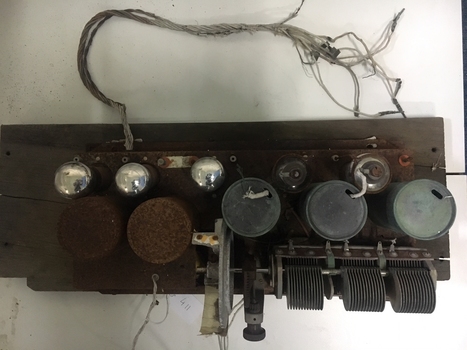Historical information
This item is likely a homemade or early commercial valve radio receiver, dating from the 1930s to early 1940s, during the golden age of radio. Many Australians built or assembled radios using kits or instructions from publications such as Wireless Weekly. Radios like this were central to home entertainment and news during the interwar and WWII years, especially in rural areas like Natimuk. The exposed construction suggests it may have been a hobbyist’s set or a demonstration model, used for educational purposes or by amateur radio enthusiasts.
Physical description
A partially assembled or open-frame valve (tube) radio chassis, mounted on a rectangular wooden baseboard. The unit features multiple cylindrical components including vacuum tubes, metal canister capacitors, and large tuning coils or condensers. Several wires extend from the board, some frayed or disconnected, indicating the item is no longer operational. The layout is typical of 1930s–1940s home-built or early commercial radios, often powered by batteries or mains with external speakers.
Key visible components include:
Four vacuum tubes (valves) with metallic tops
Two large, rusted cylindrical capacitors or transformers
Three tuning condensers (variable capacitors) with exposed fin assemblies

